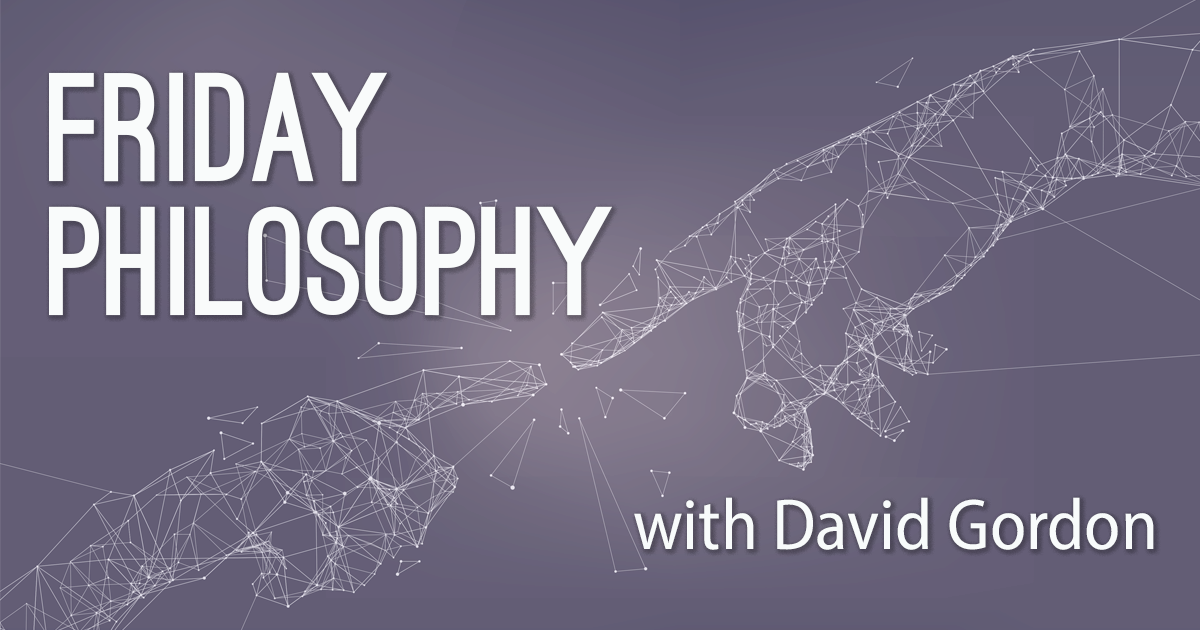
Cracked-Up Slobodian
Crack-Up Capitalism: Market Radicals and the Dream of a World without Democracy
by Quinn Slobodian
Metropolitan Books, 2023; 336 pp.
Quinn Slobodian, a professor of the history of ideas at Wellesley College, has a good deal to say about Murray Rothbard, and I have attempted to respond to that in a review that is to be published in the next issue of The Austrian. Slobodian also includes some comments on the Mises Institute, Lew Rockwell, and Hans-Hermann Hoppe, but concerning these, as Dante says, let us not speak of them, but look, and pass on. But the central argument of the book needs to be addressed as well.
Slobodian is very concerned with the rise in recent decades of what he calls “zones.” “What is a zone? At its most basic, it is an enclave carved out of a nation and freed from ordinary forms of regulation. The usual powers of taxation are often suspended within its borders, letting investors effectively dictate their own rules.” But zones are not all that bothers him. He also worries about secessionist movements that endeavor to break up nations into smaller states and also about attempts by individualist anarchists to form territories without a state at all.
What arouses Slobodian’s concern about these various enterprises? It is that they remove parts of the economy from democratic control, subjecting the people within them to the harsh discipline of the market. Workers must accept poor working conditions and bad pay, and capitalist exploiters are free to do as they please.
You might first object to Slobodian in this way. If people were free to secede and form communities as they wish, couldn’t those who agree with Slobodian’s own preferences for strong labor unions and democratic socialism form communities of their own? Wouldn’t competition among the communities alleviate the plight of badly off workers so long as they were free to migrate, solving his worries about exploitation? Slobodian doesn’t agree with this. He notes that in “a famous book from 1927, Mises had argued for secession by plebiscite and speculated on the possibility of the secession of the individual,” but he doesn’t seem impressed.
Had he taken Mises’s argument seriously, he would have found the answer to his worries about the exploitation of workers. He attributes to supporters of the free market this line of reasoning: “The free market is more important than democracy. In fact, democracy often gets in the way of the free market. Therefore, we should eliminate democracy and civil liberties, especially the right to protest, altogether.” He does not realize that so long as there are competing communities, this alleged danger is greatly alleviated.
“But,” he might say, “what about the very bad conditions that workers in zones sometimes face?” Here the answer lies in another elementary point that Slobodian has overlooked. Workers who voluntarily accept conditions that we would think are very bad do so because these conditions make life better for them. Slobodian’s failure to understand this comes out most clearly in what he says about the massive buildup of the city of Shenzhen after the Chinese government instituted market reforms:
In Shenzhen in 1987, for the first time, a market in land was introduced under pressure from Hong Kong investors. The outcome was a deluge. What became known as zone fever gripped the nation, as huge amounts of land were sucked from rural usage and collective ownership and transformed into private property on long-term leaseholds, constituting one of the biggest transfers of public into private wealth in the modern age. On paper, the success was staggering, one of the fastest episodes of economic growth in world history. In 1980, officials had aimed to bring perhaps three hundred thousand people to Shenzhen by 2000. The real number was ten million. By 2020, the population had doubled again, to twenty million, with a GDP greater than Singapore or Hong Kong.
Slobodian says about this that the “‘decollectivization’ of the countryside created a reserve army of migrant laborers who moved between the city and the countryside, offering their labor as the crucial input for the construction-led boom.” Apparently Slobodian, relying on the Marxist catchphrase “the reserve army of the proletariat,” thinks that the position of those who entered the city worsened, when precisely the opposite is the case. Nor is this an instance, by the way, of rapacious capitalists taking advantage of those in a bad situation, offering them a slight improvement but still leaving them in dire straits. Many of the newcomers to the city became wealthy and bought land themselves.
Slobodian is not interested in the benefits of competition. He fears a “race to the bottom” in which the promise of tax breaks and freedom from regulatory control lure investors to the zone that offers them the best deal. As always, he suggests this will take place at the expense of workers, who because of lower taxes will face cuts in social programs that help them. He once more overlooks the fact that if workers, taking this into account, move to the zones anyway, they are judging that they are better off there.
Nowhere does Slobodian respond to the well-known economic arguments that the factors of production tend in the free market to earn their marginal product and that the income of landlords and capitalists does not stem from a division of the “surplus value” created by workers. Instead, he dismisses these arguments as capitalist apologetics emanating from the neoliberals of the Mont Pelerin Society, especially such evil people as Friedrich Hayek and Milton Friedman.
Slobodian’s obsession with the evils of competition is so great that it leads him to dismiss commonplace observations that everyone knows to be true—everyone, that is, besides leftists ignorant of history. Competition between different courts in medieval Europe advanced the cause of liberty, but Slobodian cannot accept this because it punctures his fantasy that competition hurts workers. He quotes David Friedman as saying that “market radicals should take their ‘cues from the European Middle Ages . . . striving to create a U.S. punctuated by a large and increasing number of territorially disconnected free cities.’ Authority was not the problem. Rules were not the problem. The problem was not having enough authorities and rules to choose from.”
Slobodian says: “That this understanding of the Middle Ages was based more on imagination than rigorous scholarly study goes without saying. The medieval world was regularly reduced to a few convenient bullet points.”
When I read this, I expected references to accounts of medieval law showing that Friedman was wrong. (By the way, claiming that competing courts advanced liberty, whether right or wrong, does not reduce the medieval world to a few bullet points. The claim does not purport to be a full account of medieval civilization.)
But Slobodian presents no “competing” account of medieval law. Instead, he incredibly suggests, pointing to Friedman’s participation in medieval reenactment games, that his comments about competing courts were mere imaginative fantasies. It is hard to believe that Slobodian intends us to take this bizarre comment seriously, but I am afraid that he does; such is his appalling ignorance of medieval history.
An eminent historian has called Crack-Up Capitalism a “head spinner of a book,” and with this sentiment I heartily agree.



